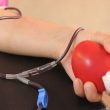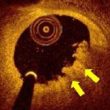iFR is a safe alternative for lesion deferral even when it comes to the left anterior descending artery (LAD). What is more, patients deferred with iFR showed significantly fewer events than patients deferred using FFR. Neither clinical cardiologists nor interventionists feel comfortable deferring LAD treatment, because it is often perceived as high risk. If functional...
These Were the Most Relevant Article of 2018 in the Field of Coronary Diseases
1- The CULPRIT-SHOCK Study Is Finally Published in NEJM and It Is Bound to Change Guidelines During SOLACI’s coverage of the TCT 2017 Congress in Denver, Colorado, we already mentioned some of the outcomes of this study that has arrived to revolutionize clinical practice, given the differences between its results and those of the classic...
In Diabetics with Multivessel Disease SYNTAX Score Calculations Are Redundant
In diabetic patients with multivessel disease, anatomical complexity assessed by SYNTAX score is an independent predictor of combined events only por PCI patients, and has absolutely no consequence for surgery. The score should not be used to decide on a revascularization strategy. If the patient is diabetic and has multivessel disease, they simply ought to...
Radial Access Is Always Preferred, Even for Treatment of the Left Main Coronary Artery
The potential need for a 7-Fr guidewire, the use of several coronary guidewires and/or a kissing balloon, and the requirement of indispensable monitoring by intravascular ultrasound (IVUS) have been used by some interventional cardiologists as excuses to resist radial access. In that sense, left main coronary artery angioplasty was the last stand of femoral access....
Coronary Disease in Diabetes: Diabetic Patients Have Much Greater Plaque Progression
Patients with diabetes mellitus experience significantly greater plaque progression, particularly regarding adverse plaque. Male sex and baseline plaque volume >75% were identified as independent risk factors for plaque progression; the latter actually tripled the risk. This study with tomographic follow-up sought to determine the rate and extent of plaque progression, changes in plaque features, and...
TCT 2018 | LRP: Infrared Technology for the Detection of Vulnerable Patients and Plaques
Despite optimal medical treatment and modification of risk factors, patients may spend long periods without symptoms and then experience acute coronary syndrome without any prior indication that may allow us to predict the time of occurrence. This is why the possibility of detecting patients with vulnerable plaques and who are at higher risk is very...
See the presentations of the 9th José Gabay Fellow Course
We are deeply thankful to all interventional physicians who, motivated by their great scientific and educational vocation, presented their works at the “José Gabay” Course. Read the presentations below: Module I: Fundamentals and Basic Elements. Leiva Pons, José Luis. “Vascular Closure Devices. Step by Step.” (Spanish version) García García, Hector. “Current Status of Coronary Intervention:...
Live Cases, Edited Cases and Lunch Symposiums Sponsored by the Industry
The participation of the medical industry is, undoubtedly, one of the most appealing aspects of the SOLACI-SOCIME 2018 Congress. As usual, the most important companies in this industry have decided to take part in our event. Their contribution is most valuable, as it brings relevance and improves the quality of our scientific presentations. Organize your...
Dyspnea and Chronic Total Occlusion: A Symptom That We Can (Attempt to) Improve
Dyspnea is one of the most challenging symptoms as regards its assessment and treatment in patients with coronary disease, since it may stem from both cardiac and non-cardiac causes. Patients in whom dyspnea is the sole symptom of coronary disease are at a higher risk of not receiving adequate treatment, and their short- and long-term...
OCT Follow-Up of Plaque Erosion with Medical Therapy and Without Stenting
Most acute coronary syndromes (ACS) are caused by the following three different pathologies: Plaque rupture Plaque erosion Calcified nodule In daily clinical practice, all patients who experience them are treated with angioplasty, regardless of which of these physiopathologies led to the ACS in each case. Some early reports indicate that patients with plaque erosion might...








